Drones have appeared and extended on the market so much that there is almost no way of knowing which you should buy. There are so many drones available now that it can be challenging to know which you should buy, and which will suit your needs. That is why we have created this drone buying guide.
Drones are available in a vast array of styles, abilities, and prices. Knowing your budget before you buy one will let you have a clearer idea of which you can buy in the category that you want.
First of all, we are going to take a look at what types of drones that are available. There are cheap drones, immensely expensive ones, and all of the prices in the middle. Here is a list of the main categories of a drone:
- Toys
- Basic Camera
- Amateur Camera
- Advanced Camera Drone
- Racing and Stunt
- Professional Use
If you are looking at that list and feeling a little boggled at the options that you have already, then things are going to get worse, I am afraid. All of those categories have different styles and abilities of drones that you have available to you. However, let’s see if we can find the perfect drone type for you.
Contents
Toy Drones
Even though buying guides rarely have toys included in them when they have such high-end availability, we feel like it would be bad practice not to show you all of the options you have. Drones have advanced in technology a lot since they emerged on the market about ten years ago. They are also a lot more readily available to the public. There was a time when you would only see a drone in a military or film making documentary. However, now, you can even buy them as Christmas stocking fillers for children.
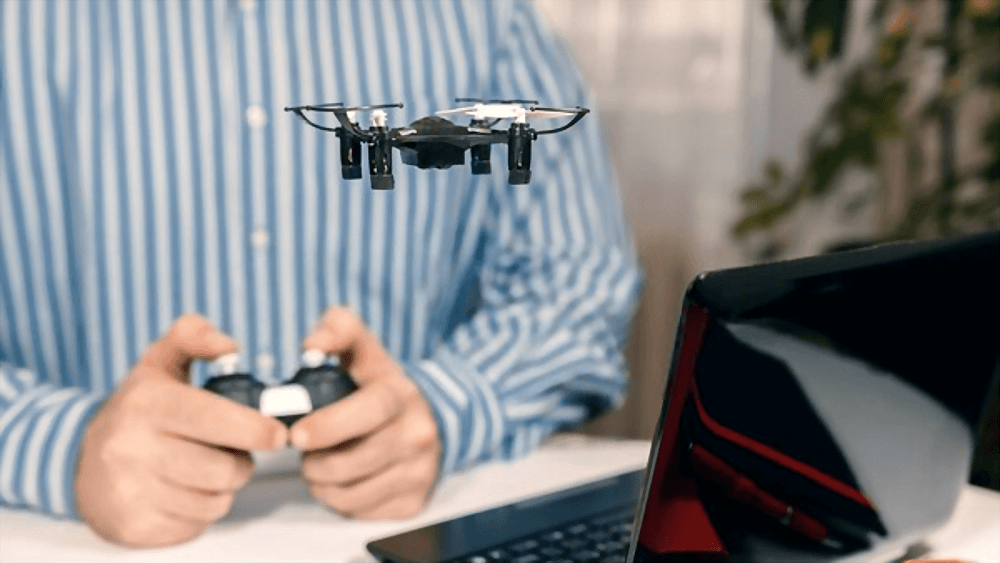
Toy drones are what you would expect them to be: Cheap, plastic drones with cheap, non-replaceable parts although they are an excellent way to get you, or your children, into the hobby of drone flying without spending much money. However, as they are only toys, there are compromises you need to make. They are not the advanced machines that you see in high-end films, etc.
The problem that you will face when buying a cheap toy drone is that you will find them a lot more challenging to fly than any other drone on the market. Not only that, though, but they are also a lot more basic. The motors are smaller, thus less power; therefore, the battery has to be smaller and won’t last as long. Also, because of the lower amount of technology that goes into these toys, they can be a lot harder to fly than other, more expensive models. It would undoubtedly be better to buy a decent model and enjoy using it.
Basic Camera Drones
First of all, let’s have a look at basic camera drones. Once you move away from the toys and get into bigger and better machines, you will see a lot of improvement. There are a lot of differences that you will find in a slightly higher-end drone, such as significant improvements in stability, handling, and maneuverability. Do not expect a fantastic experience with the basic drones. However, you will find that you get enjoyment out of them instead of the frustration that toys offer.
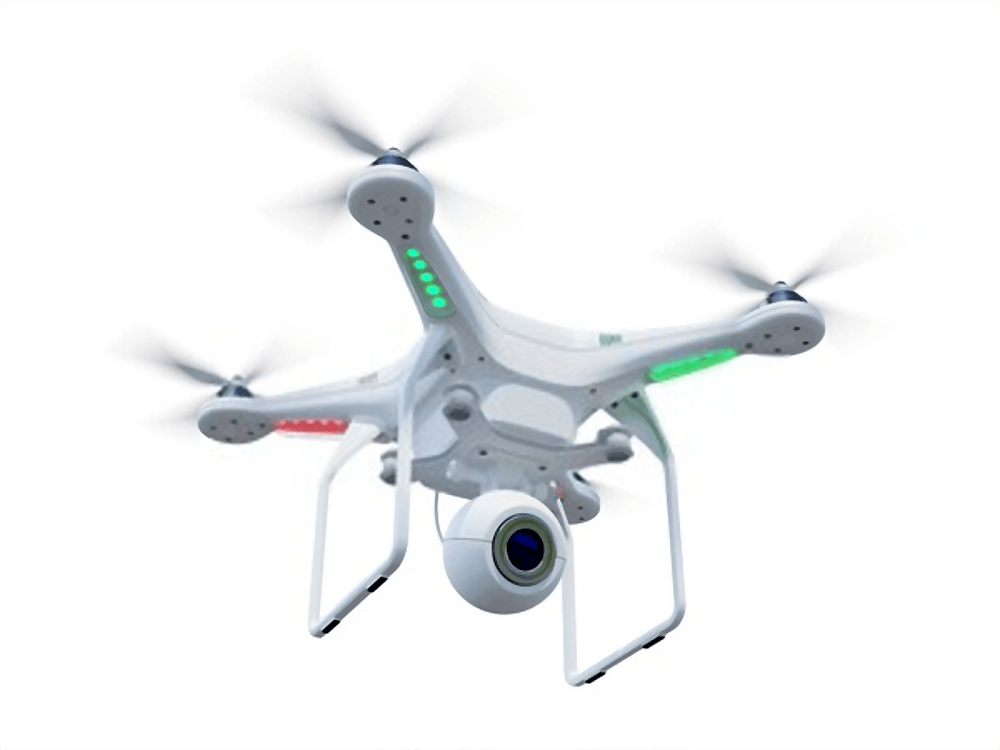
All of the drones in this category will offer cameras as standard, hence the name. Although, before you start dreaming of 4k UHD videos to show your friends and family, you need to know that the cameras they offer are usually pretty low resolution. Even so, being able to see from a birds-eye point of view will, undoubtedly, give you a lot to think about, and make you want more. If you do not find yourself reaching into your pocket to buy a better model after this, then you probably never will.
Amateur Camera Drone
Moving into the realms of an amateur camera drone, you will find some pretty significant differences, such as:
- High-quality parts and accessories.
- More power.
- The introduction to addons. – Moveable cameras, crash avoidance, etc.
If you do the correct research and due-diligence with what model you buy, you could see a more significant jump in performance than you would expect, at a price not much more than some of the basic camera drones.
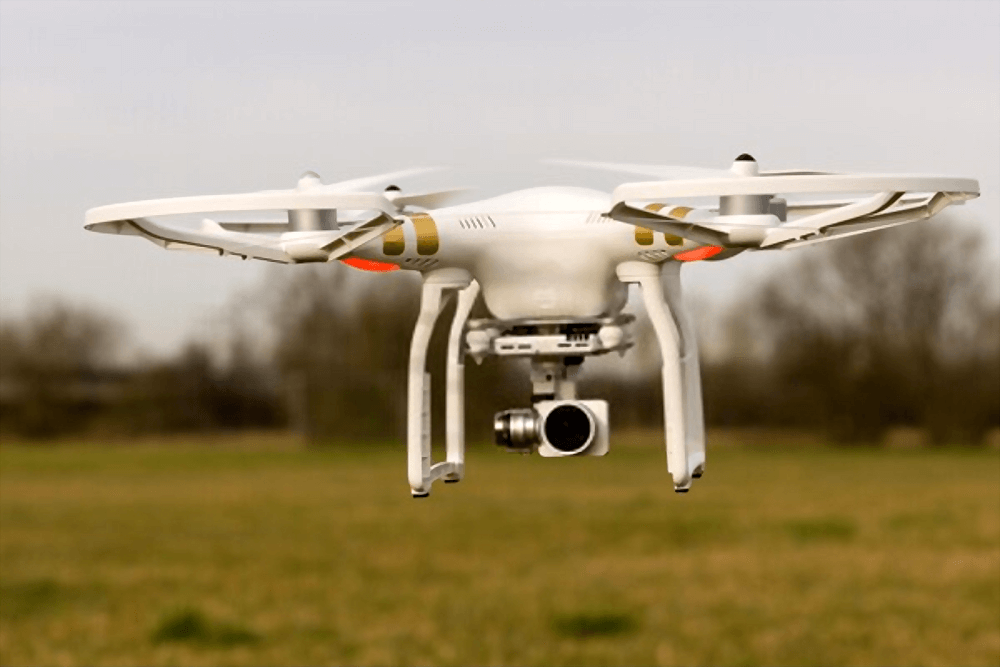
There are other features that you will be able to expect in this category, too. With the increase in popularity of aerial photography and video recording, there are vast numbers of competitors trying for the top spot. While having such an extensive array of choices may seem mind-boggling, it is good to know that you have a good amount of options to pick from. You can also start to expect video recording and streaming to your handheld device.
Advanced
The advanced specifications of this category make them exceptional for small business use. Advanced camera drones are the go-to drone for companies who have to inspect hard to reach areas such as water towers, derelict buildings, etc. It is within this category that you start to see significant increases in other technology, such as:
- 4K video recording cameras
- Crash protection systems
- Return to home abilities
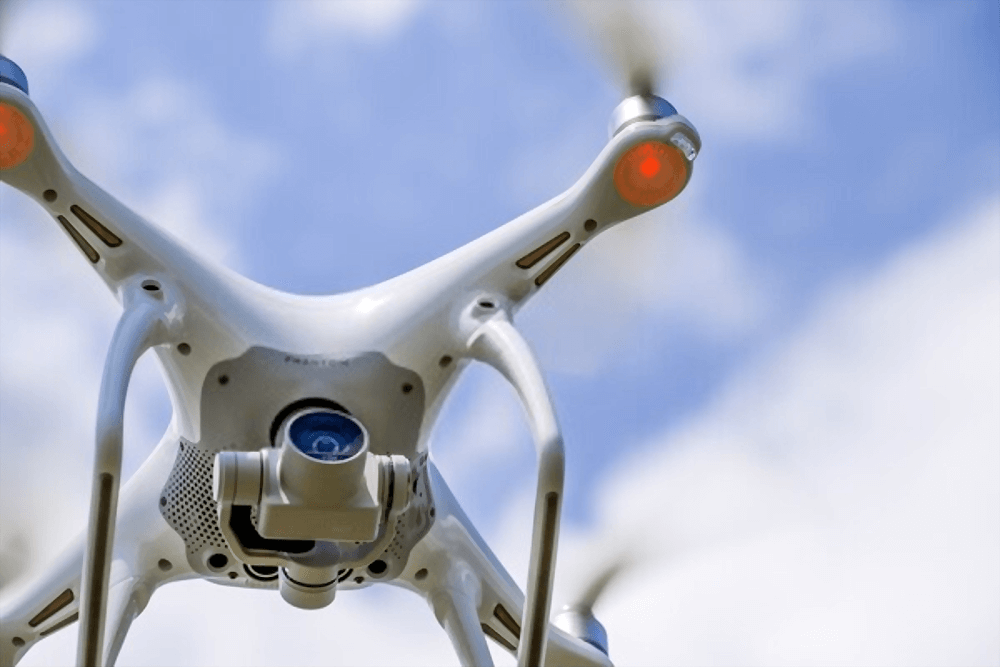
However, with the rise in tech found on them, you will see a significant increase in weight, too. Although you may think that is bad, there are advantages to it. The higher load will mean an increase in stability while flying, even when it is a bit windy. There is one downfall, though: Having a higher weight will decrease flight time when you compare it to some of the lighter models. If you want a business capable drone without breaking the bank, you have found your match!
Stunt And Racing Drones
Stunt or racing drones are in a complete league of their own. There are very few similarities between racing and camera drones. Yes, they usually have four motors, one at each corner, but that is almost where the similarities end. There is one piece of advice I would like to give to you before you rush out and buy one, though. That is, make sure you can fly a standard machine before you attempt these.
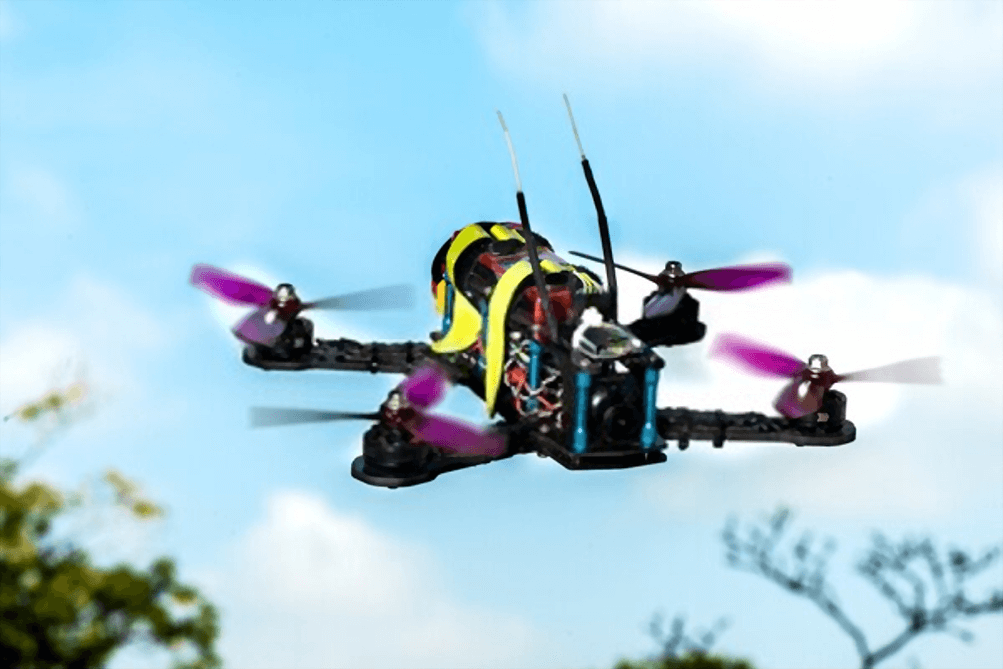
Racing these machines is such a popular sport now that there are even TV shows and internet streams of people competing. And no, I do not mean amateur videos of people crashing them into trees. I mean full-on racing around indoor tracks made from neon lights and huge prize funds. The DRL, or Drone Racing League, has gained so much popularity that there are a plethora of partners and sponsors such as:
- Allianz
- BMW
- Swatch
- Sky Sports
- The U.S. Air Force
- And more
If you are into drones and racing, take a look at that site, you will be amazed. However, do not go into buying a drone, thinking that you will be able to purchase a machine as good as the ones you see on the DRL, as almost all of them are built to custom specs and highly modified. At the top end of a racing drone, you can buy it as a kit that comes complete with a headset for viewing what the camera sees.
Professional Use
Professional use drones are the epitome of drone capabilities. However, before you get too excited about buying one, ensure you have the money to pay for it. They are not cheap. Before the great commercial use of drones for video recording, aerial shots on films and television shows would use helicopters with whole film crews in them. Using helicopters would have taken a lot of planning and even more money.
However, now, when you see newer programs with high camera vantage points, you are most likely looking at a video that a professional camera drone took. While it may seem limited, you will find that you have about half an hour of flight recording time before you need to change the battery. However, one thing that is worth noting is that you will pretty much forget that you have only had 30 minutes of recording time because the quality is so good.
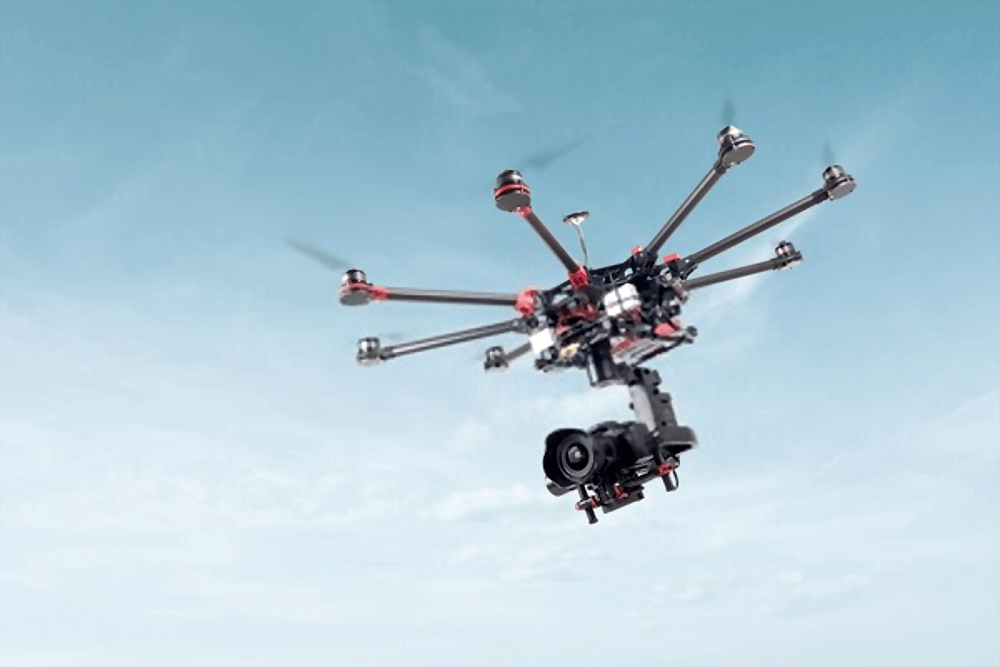
If you are in a profession where it calls for video making from a drone, you will not be disappointed by them, and you will never look back. Also, due to the complexity and price of them, you are highly unlikely to find one that doesn’t have all of the safety features available. We will look int those in a little while.
Drone Buying Guide – Considerations
Now that you know about the majority of types of drones, you probably have a pretty good idea about what you want. However, there are still things that you need to consider when buying a new flying machine. As you have seen throughout this article, there are many different aspects that you need to think about, such as weight, power, and safety features. In this section, we will look at the following points that you need to check before spending your hard-earned money:
- Personal requirements
- Batteries
- Replacement parts
- Safety
- Speed
- Range
That list is only of the primary considerations that you need to think about. Although I have listed them in an order that we consider the best way to look for them, there are certainly some points that are more important than others. Therefore, if you wish to go between the sections, feel free.
Personal Requirements
The personal requirement is possibly the most crucial decision that you have to make. If you get this part wrong, it could land you with a drone that you do not use as much as you would like. On the other hand, if you pick a type of machine that you want straight away, it narrows it down quite a lot. Even though you have seen what each is good for, here is a quick reference:
- Toys. – A cheap present for someone when you think that they will enjoy flying but may crash it.
- Basic Camera. – Already have the bug for flying, but want something more controllable than a toy.
- Amateur Camera. – More features and stability than the basic variant, but more expensive.
- Advanced Camera Drone. – Do you want to get high-quality videos to show off holiday locations and dabble in the world of video making? Or perhaps you own a company that requires high altitude access.
- Racing and Stunt. – Not interested in making videos but want to fly fast and feel like you are in the cockpit.
- Professional Use. – Professional filmmakers and marketers, etc.
Most people at the entry-level of drones would probably be better off to buy an amateur camera drone, as they offer more safety features and ability.
Batteries
While battery technology is advancing at a phenomenal rate, there still has to be a compromise. Everyone wants the best drone, with all of the features, and that will fly for hours before battery changes or charges. However, that is not possible. Unfortunately, there is, and always will be, a correlation between battery lift, drone weight, and motors. For example, to have a longer run time, you need a larger battery. A larger battery weighs more, thus needs larger motors to lift it. Larger motors take more power, and therefore, drain the battery quicker. Until there is a time where batteries are like this as standard, we will have to accept that no matter what, you have about 20-30 minutes of flying time between battery changes.
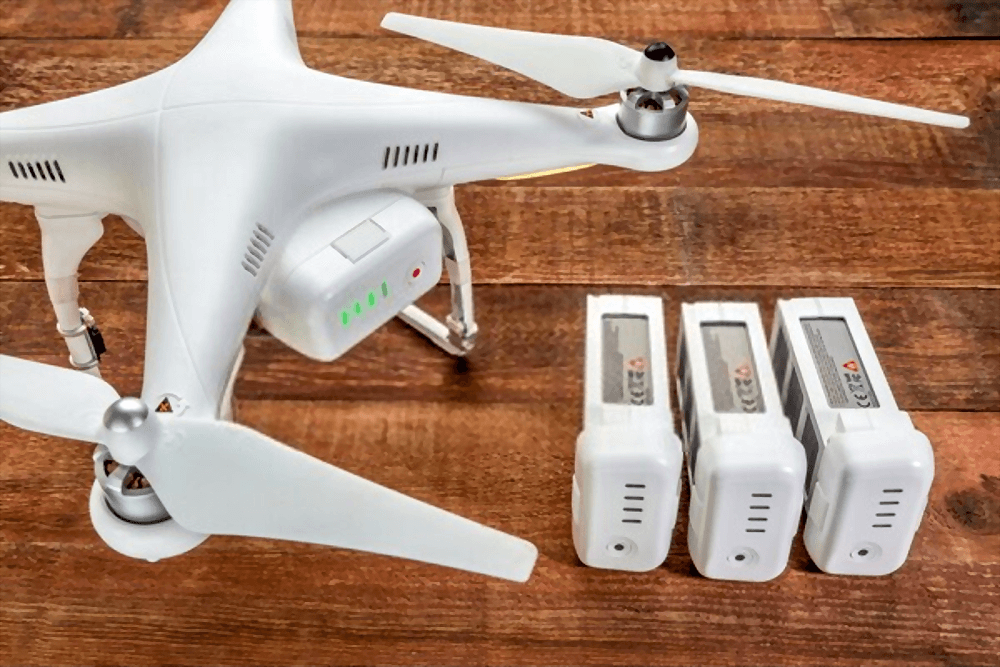
However, one other point to mote about drone batteries, is that they will go flat. If they do, you crash your machine. Toy drones are only likely to get about 5 minutes of flying before that happens. With some of the more expensive GPS equipped drones, you will get autonomous “return to home” features that will bring the drone back to you before it goes flat. However, if you do not have that feature, I highly recommend you set a timer for about 5 minutes less than the run time.
Replacement Parts
One of the things that you are likely to overlook is the fact of replacement parts. When you see that shiny, new drone sat in the store, at the very least, check that it has replacement rotors with it. Do as much research about the parts available for the model you are thinking of buying as you can. As I have said, you may get a set of replacement blades with the package. However, after they are broken and replaced, can you get more? What if the chassis cracks, can you find a replacement, or do you have to buy a whole new drone?
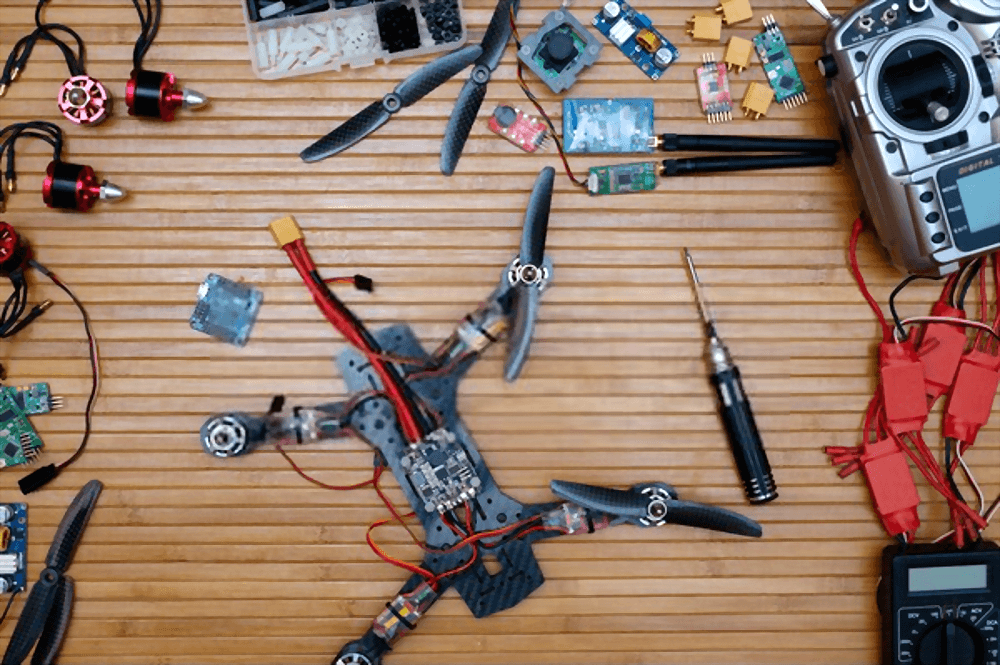
Some of the larger manufacturers of drones do make and sell parts separately for their models. Also, they are quite simple to get. One of my favorite manufacturers for parts is DJI. They have an excellent numbering system that allows you to order and purchase parts based on a numerical parts system, instead of trying to find the name of the piece first. However, some of the manufacturers do not have any spares capacity, and they will not sell anything less than a complete kit.
Spare parts are certainly something that you need to look for before buying your drone, as you do not want to buy one and find you can’t get a new, specialized motor cable for it after you fly the drone into a tree.
Drone Buying Guide – Safety
Even if you only fly drones as a hobby, or intend to, there are safety features that you need to consider, too. Some of those include, but are not limited to:
- Blade guards. – A simple guard around the blades is enough to take the brunt of an impact instead of your blades. Therefore reducing the requirement to change the more expensive rotors, and you may only need to change a cheap guard.
- Crash sensors. – Proximity sensors that guide your drone away from obstacles when you get too near them.
- Return to home features. – When your battery is nearly flat, they will return to you.
- Parachutes. – When everything fails, automatic chutes ensure a soft landing for your expensive new investment.
- Automatic “no-fly zones.” – DJI have incorporated GPS and no-fly zones. They stop you from going a certain height around airports and prevent you from flying into airports, or other military bases altogether. Pretty good if you do not want to land in serious trouble.
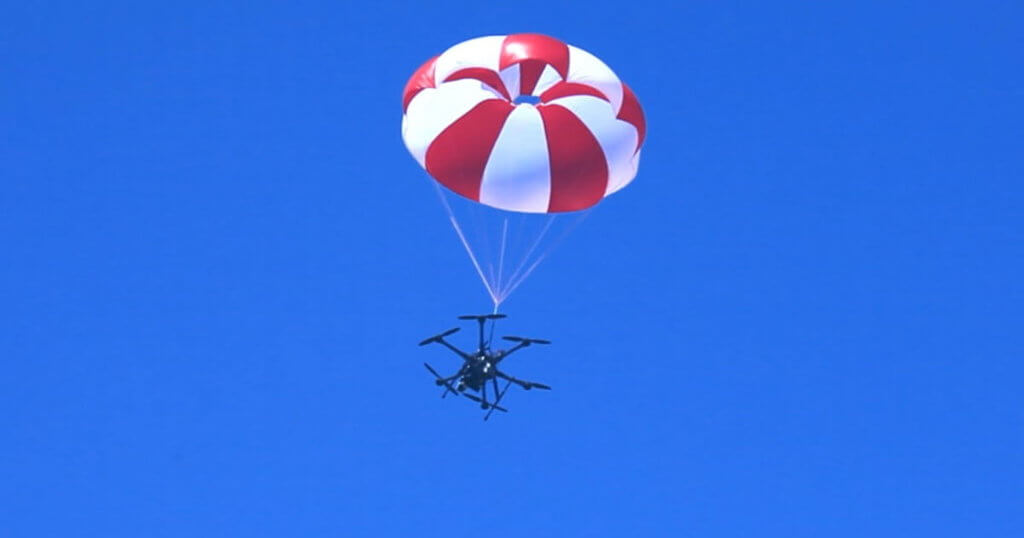
When you are buying a drone, please try to get as many of the safety features as you can afford. They will be a lot cheaper than replacing your drone after a crash or paying a lawsuit for flying where you shouldn’t.
Speed
Think about the speed of the drone you buy very carefully. Some machines will travel up to 95Km/h or even faster without any modifications. That is amazingly fast, and at first glance, you may feel like you “need” one. However, that should not be your first thought. Think about when you first sat in the driver’s seat of a car. Were you racing off at those speeds the instant you sat down, or did you take it slow to get used to the controls? I hope the second.
You often have two options: Buy a fast machine with not many extras. Or, buy a slower one that has more features to use. The choice is yours, but I would certainly look for a drone that allows you to limit the speed for training, and increase it as you feel more comfortable with it.
Range
My first point on the range of a drone is, do not buy one with much more range than you need. If there is a park where you can fly drones, but it is only 1000 Ft square, you do not want a long-range drone. There are a few reasons for that. The main thing is that you will not want to pay the sort of money required to get a drone to fly a long distance, and the second; if you do, you will find that it lacks in other areas.
There is a considerable difference range when you consider all of the options available. For example, if you have a toy, you are only likely to be able to fly it 20 meters or so. However, if you have a limitless budget for them, you can buy long-range drones that will fly up to 1.2 miles! Again though, do you need to, and will you use it?
Almost all new drones use the same frequencies as your home WiFi, 2.4 or 5GHz. There are some pros and cons to that fact. They are useful because we know they are pretty reliable and cheap to make. Therefore, you will not have to fork out vast amounts of money. However, they are bad because you may find there is a lot of interference if you use them around built-up areas.
But What Happens If you Exceed That Distance?
Well, there are four options here: (Unfortunately, the only choice you get is by choosing the correct model.)
- Run-on. – Possibly the worst design ever in the manufacturing of drones. If you are going in a specific direction when it loses radio contact, it will continue in that direction until the battery is flat, and then fall out of the air. Certainly not a great option if you have only just taken off, start flying straight and level, and lose contact. You may have to chase it for 20 minutes before you find the crash site of bits.
- Stop. – Some drones incorporate the “stop and hover” function to losing connection. A little better than run-on, but if you are over a large body of water, you have to get within range again pretty quick before the batteries run out.
- Fail. – Fail is possibly not the best word here. But that is what happens. The drone loses all power and falls to the floor as soon as it leaves the range.
- Return. – By far, the best method for dealing with radio loss is returning. Again, DJI pioneer this technology. They use GPS to know where they were when they lost signal and turn around and return to that same place.
If you have much of choice in a range exceeding tech, opt for return.
Conclusion
We hope that our drone buying guide has given you a little more insight into what you may want. There are some big decisions to make before buying your first drone. However, take all of the points, and note which you feel would be best for you. Then make a shortlist of options available.
Two points to note:
- Check local flying laws.
- Check your home insurance covers your drone. If not, buy separate insurance.

